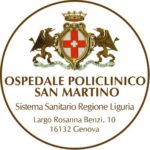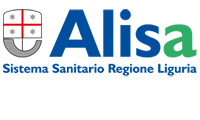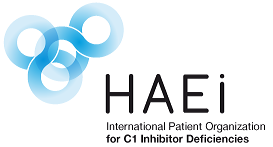Emergency and Right Diagnosis for HAE (HEmRIDI)
Hereditary Angioedema (HAE) is a chronic genetic disease estimated to affect 1 in 50,000
people, which until 1965 used to have a mortality rate of 20 – 30%. Awareness and knowledge
about this disease made flourish a number of therapeutic options, improving patients’ life
expectancy and quality of life, but there is still a lot to do to this extent. There are many kinds of
HAE and therapeutic plans vary from individual to individual. A timely diagnosis is key in order
to prevent comorbidities that create complications and do not respond well to standard
therapies for HAE. In such cases, the identification of the most appropriate cure might be
problematic and have serious consequences on the quality of life of patients and their families.
The Emergency and Right Diagnosis for HAE (HEmRIDI) project aims at anticipating the
diagnosis and initiate the most adequate therapeutic plan as soon as possible. Working in close
partnership with Cloud R HAE, the largest existing database for HAE episodes, we have the
opportunity to adequately use the most detailed information available on therapeutic plans and
best practices related to this pathology. This database, containing data related to attacks from
patients spread all over Europe, finally brings to life a unique source of information, which has
never been available before, and which constitutes a solid base of lessons learnt at international
level. Our project wants to combine this knowledge with local needs of clinicians and patients,
which vary from country to country, from region to region.
In 2018, we started redesigning patient pathways in Italy. The first prototype currently
implementing this methodology is San Martino hospital, Genova, where we have brought
together all the key clinical roles involved in the patient pathway from a first access into ER to
pre-diagnosis, diagnosis and therapy. This work is led by the Head Doctor of the Allergy Unit of
the main regional hub, and is implemented by a core team of clinicians, including: ER Directors,
Heads of Allergology Unit of ERs, at least two ER nurses, at least two ambulance service
professionals, a representative of scientific society, a representative of laboratory tests,
representatives from patient associations and families of patients, and one anaesthetist.
This doctor driven core team will re-design the patient pathway aiming at the best possible
value for the patient, with a particular focus on an early diagnosis and the identification of the
most adequate therapy for each specific case. Once the process flow is ready, we will ask political
institutions to conduct a pharmaco-economic analysis to make an exact estimate of the amount
of resources released thanks to this patient-oriented and doctor driven approach. With these
data and the positive results of patients’ quality of life questionnaires, we will present the new
patient pathway to local, national and international healthcare authorities, promoting it as new
guidelines for HAE. We are confident this project is a significant step forward for HAE patients
and their families worldwide.







